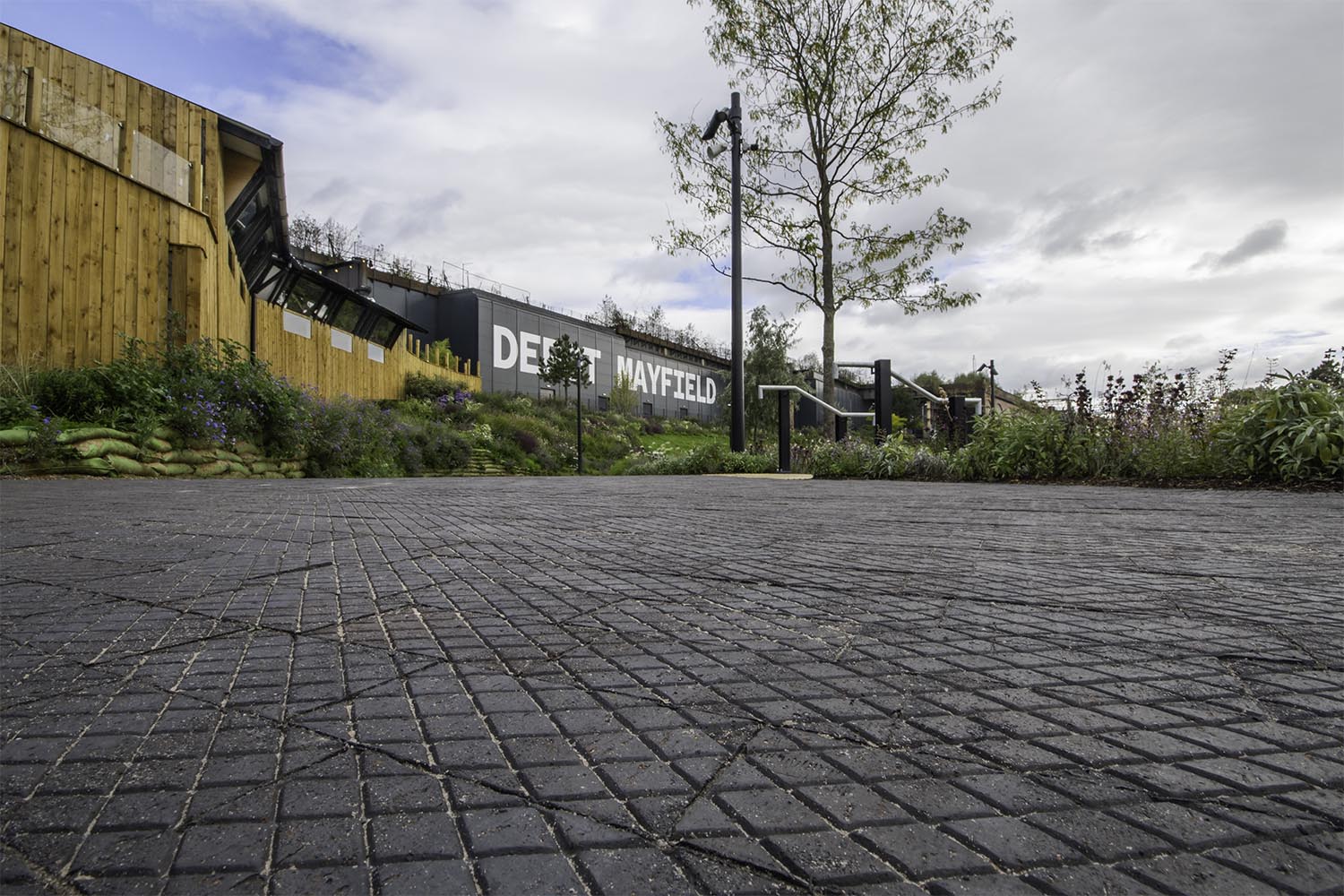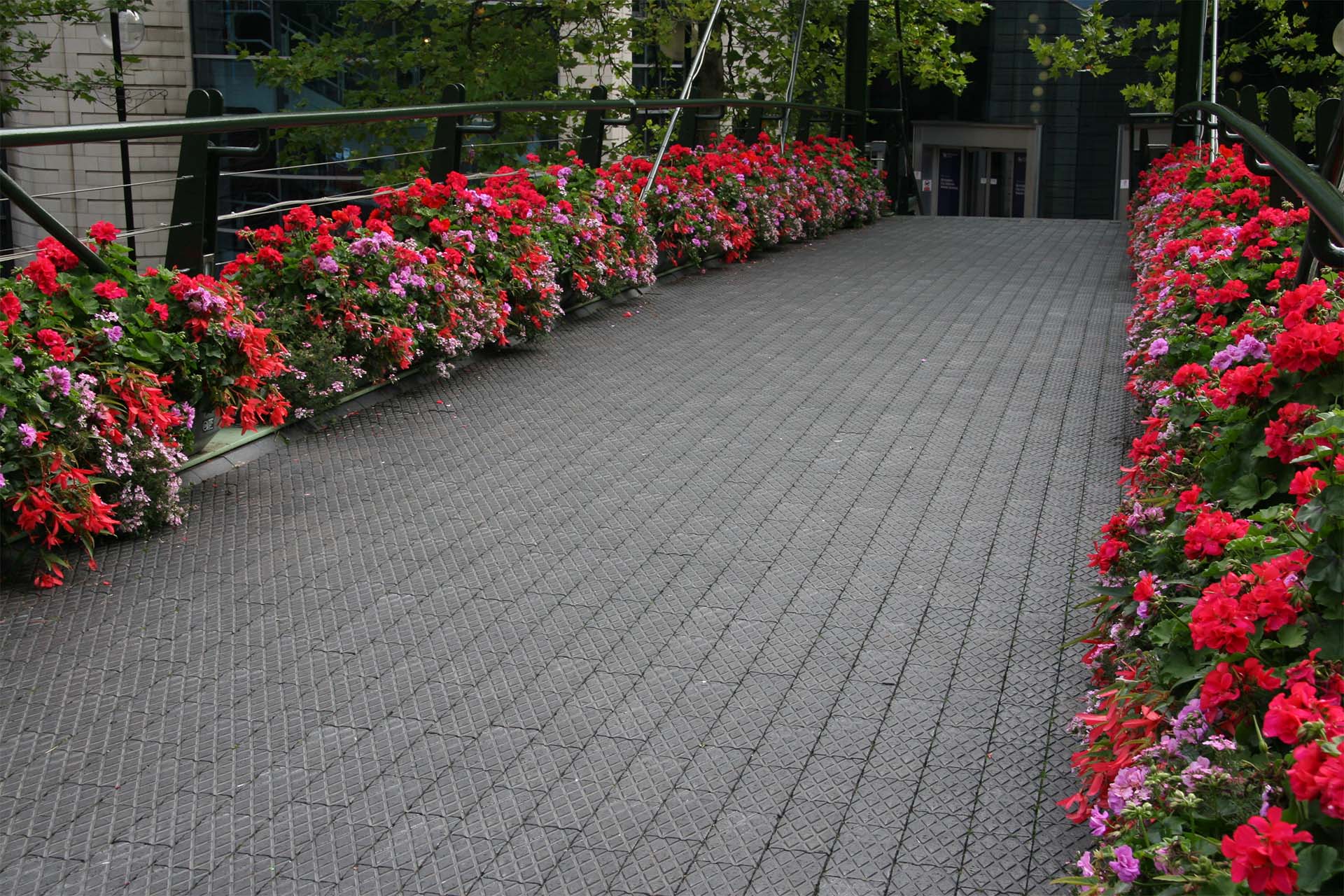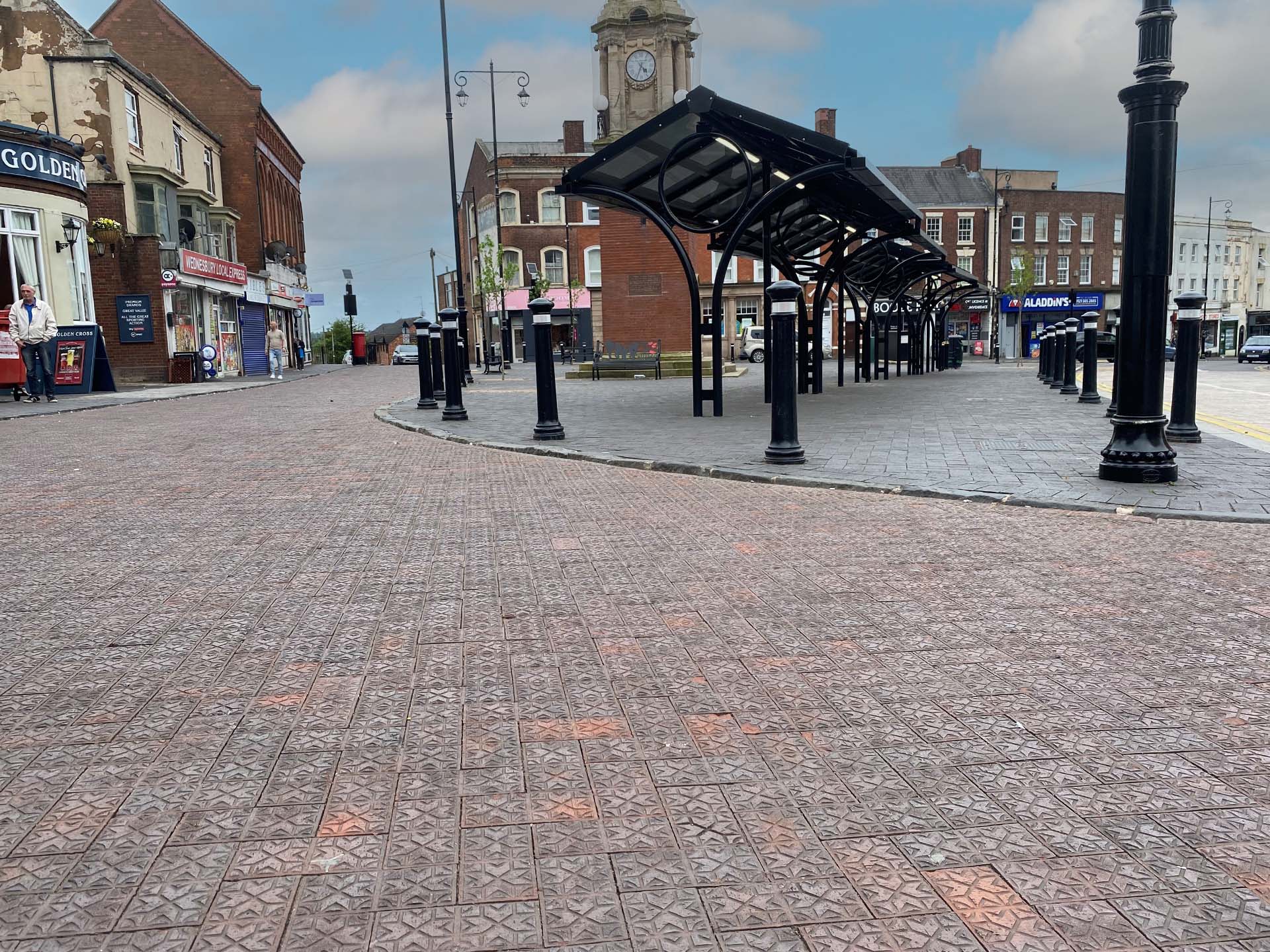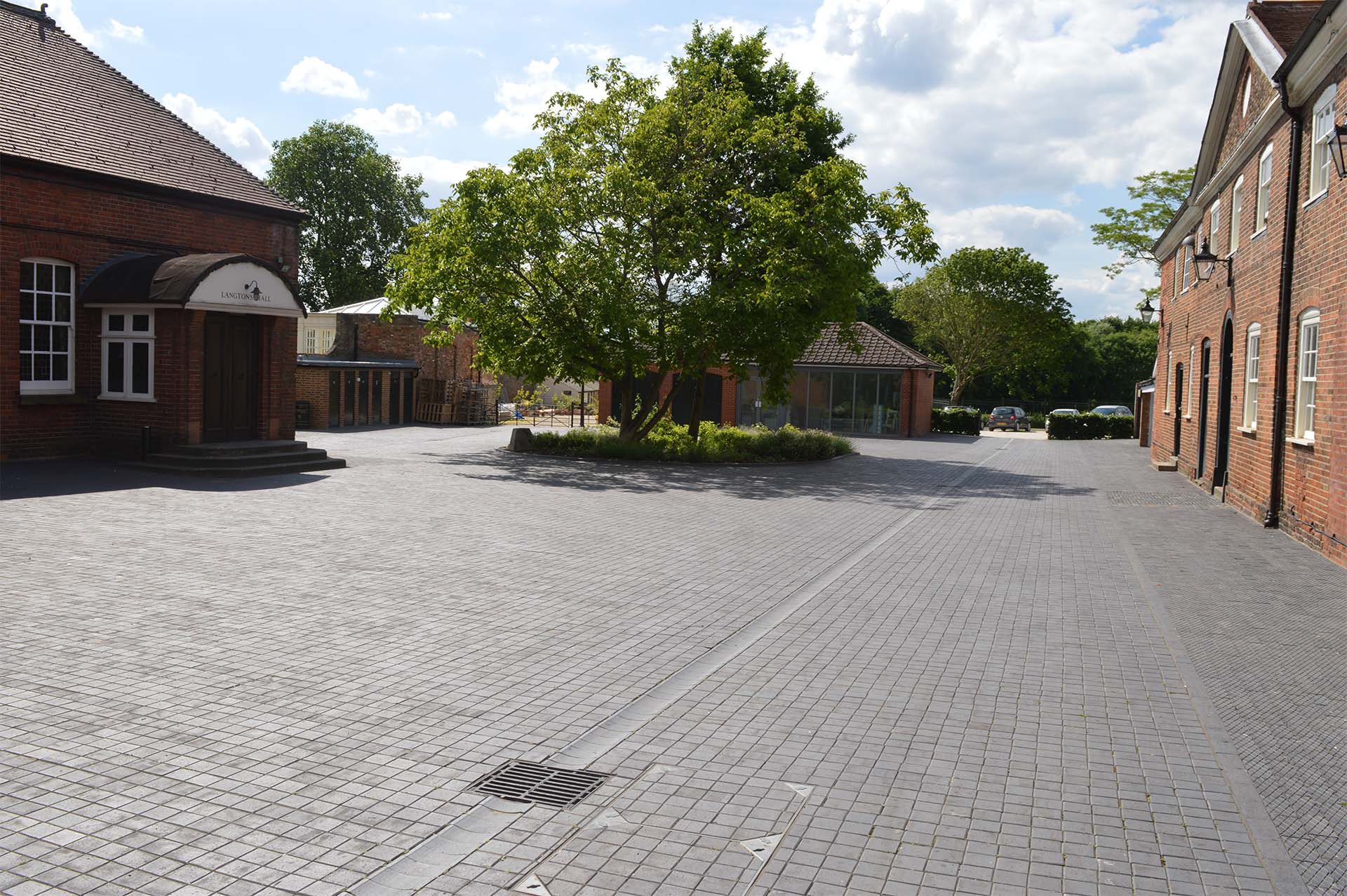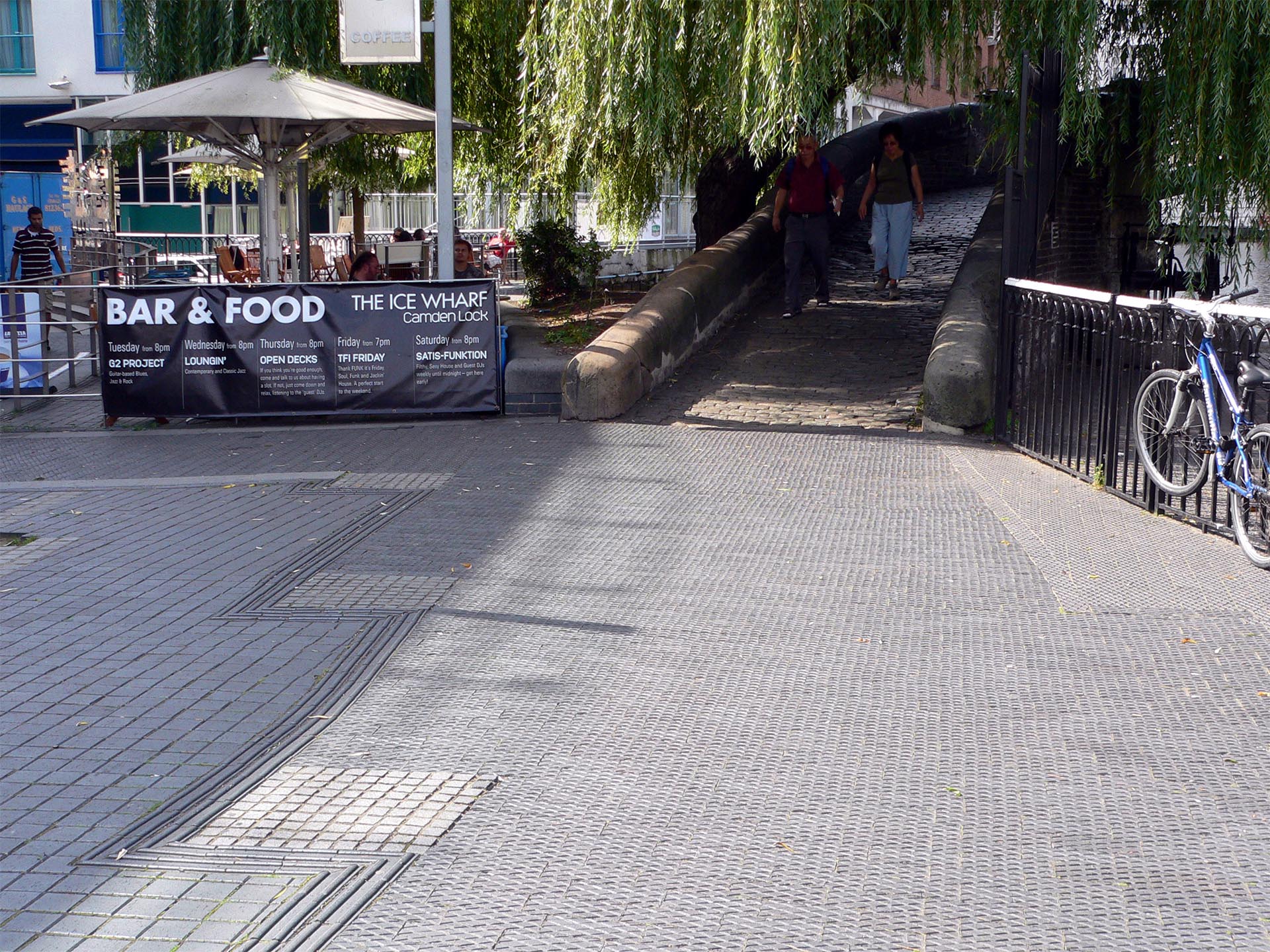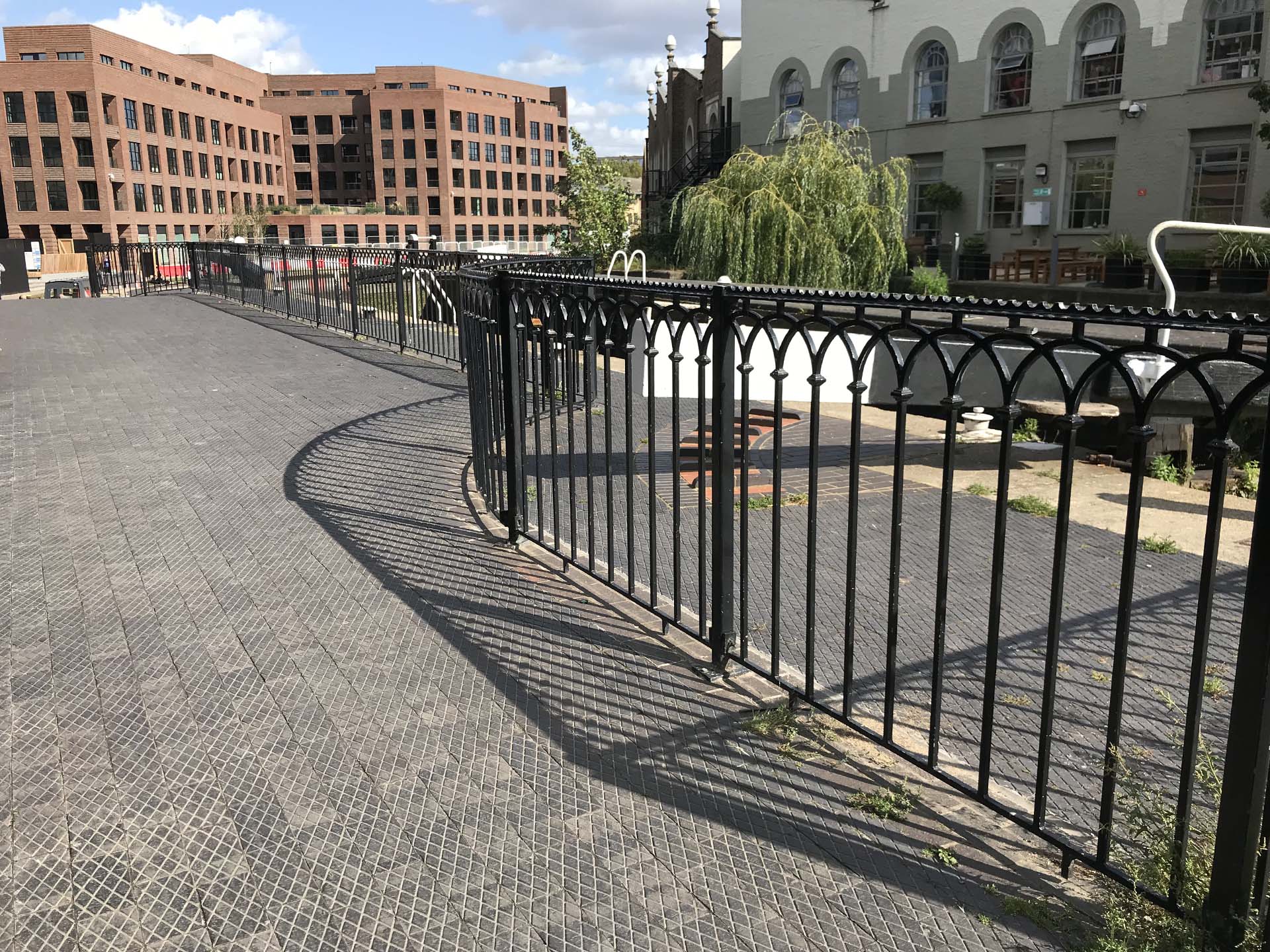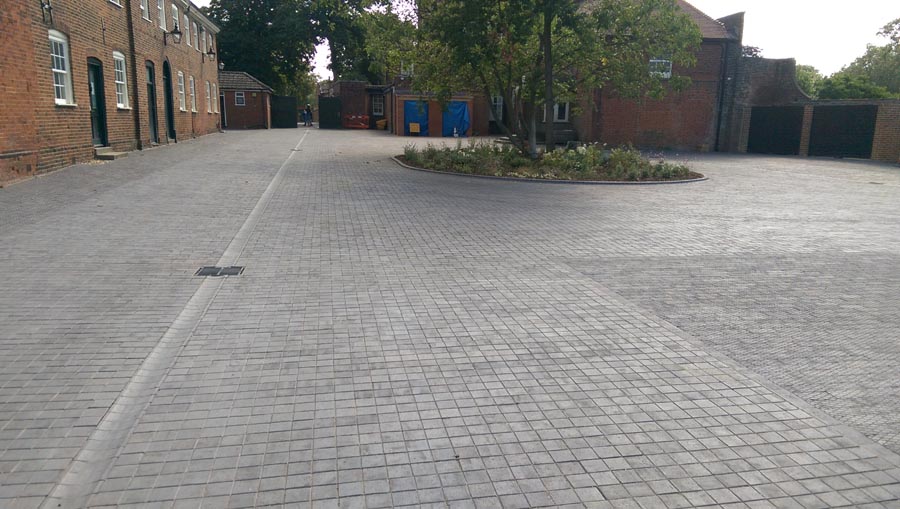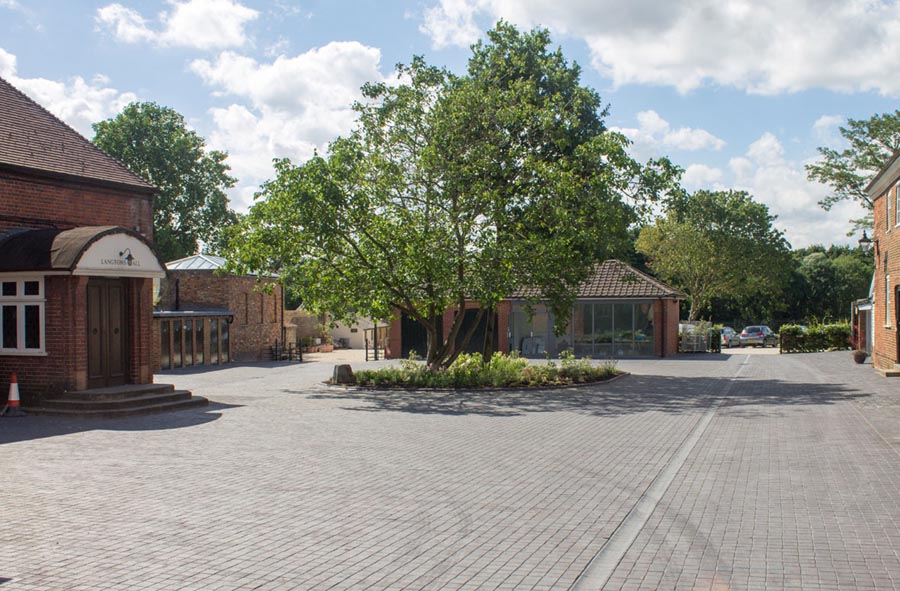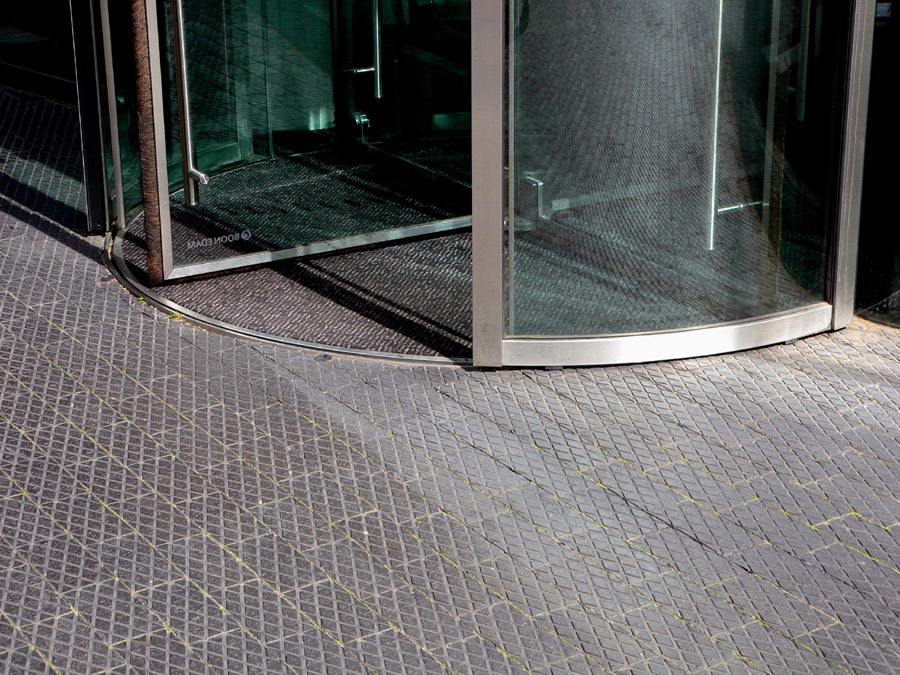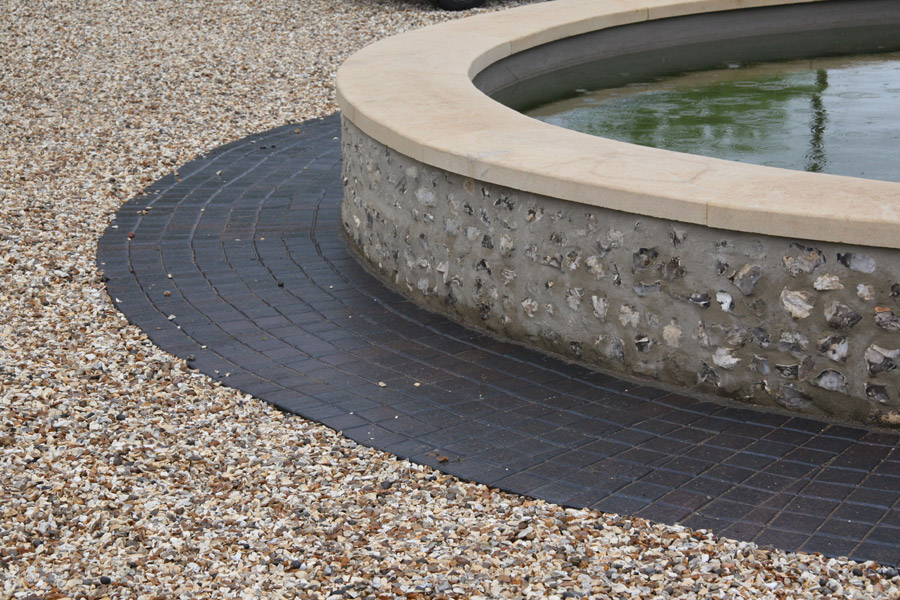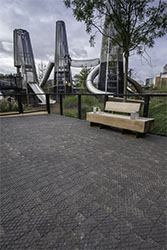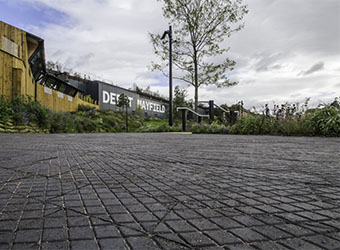Staffordshire patterned pavers
Typical of the Victorian era, Ketley patterned pavers are the authentic product, the perfect match for restoration or an ideal means of achieving a traditional, period look.
Ketley chequered and panelled pavers were widely used by the Victorians beside their canal and railway systems and in their industrial and urban developments.
Ketley panel pavers are also very popular for stables and yards; they are called a variety of names including stable block pavers or cobbles, blocks, chocolate bar or square sets. Authentic Victorian clay pavers, they are produced the same way and to the same designs as they were in Victorian times. Their very high durabilty and grip make them ideal for use within stables or on courtyards.
Patterned designs not only shed water rapidly and provide enhanced traction, their traditional designs also add a long established look and a strong aesthetic appeal.
Ketley Patterned Pavers are also particularly effective when used to break up large areas, by providing contrasting banding or by adding interest and texture. They are available in 4 authentic Staffordshire clay colours, Staffordshire blue, Staffordshire red, Staffordshire brown brindle and Staffordshire brown antique.
We are also able to make bespoke patterned pavers. Contact us for further information.
Staffordshire blue
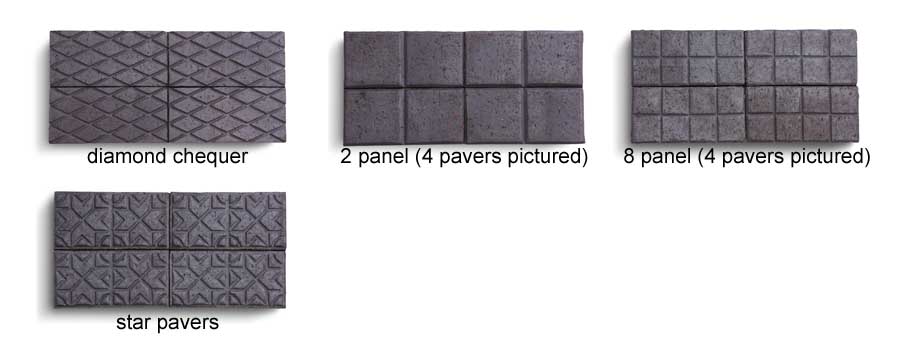
Red

All patterns also available in Brown Brindle and Brown Antique
Bespoke Patterned Pavers

Are you looking to match in with a patterned paver that is not longer in production? Send us a sample and we will recreate it. We can also manufacture completely new designs, just send us a drawing of your designs. We use highly efficient manufacturing techniques which makes producing bespoke textures and patterns considerably less costly than you might imagine! Do get in touch for more info....
Case Studies
Randall Pattern Play


This thoughtfully crafted public installation designed by Maria Gasparian blends artistry, heritage, and functionality. Using bespoke hand-decorated Ketley blue bricks, sculptural benches,showcase a variety of brick bonds and patterns, with chamfered edges and varied seating heights designed for safety and inclusivity. Bespoke patterned pavers, weave through the space providing visual continuity. More details >>
Mayfield Park
A 6 acre brand new city centre public park has been built in Manchester on the banks of the River Medlock. "A key part of our approach was to ensure the new park was authentically connected to its industrial past”, explains Duncan Paybody, Director of Landscape at Studio Egret West, lead landscape architects for the scheme and park designers. 82,000 Ketley Staffordshire blue diamond chequered clay pavers have been laid in the park, providing hard landscaping for pathways connecting the sequence of spaces, their traditional diamond pattern providing extra traction underfoot in wet conditions. More details
Red House

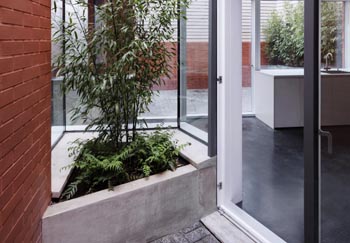
A multi award winning new build house in London designed by 31/44 Architects and photographed by Rory Gardiner uses Staffordshire Blue Star pavers for the inner and outer courtyards and the entrance. The decorative Victorian patterned pavers are in keeping with the decorative concrete panel on the front of the house. More details
Camden Lock, London
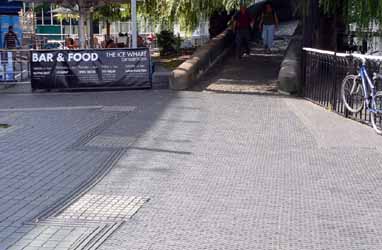
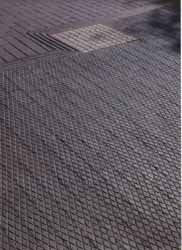
A mixture of Ketley's staffordshire blue patterned pavers were used to renovate the area around London's Camden Lock. Areas of diamond chequer pavers are separated from areas of 2 panel pavers by Ketley tactile ribbed pavers maintaining the traditional appearance of this canalside setting.
Brindley Place, Birmingham
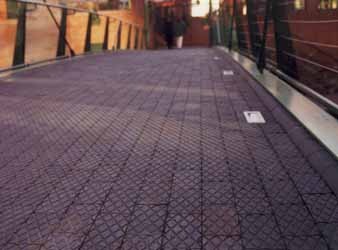
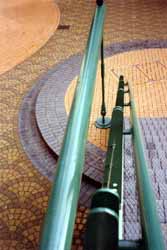
In the early 1990’s Birmingham City Council made substantial improvements to the West side of the City Centre, particularly with the construction of the International Conference Centre and the development of Brindley Place, a complex of restaurants and offices. Between these two new developments is a very traditional canal. It was necessary to provide a footbridge linking the two where a traditional, hard wearing, non-slip product was required. Birmingham City Council chose Ketley Staffordshire Blue Diamond Chequer pavers, which met all the demands required. It is interesting that the same pavers have been laid on edge to provide risers for the steps.
Langtons gardens, Hornchurch
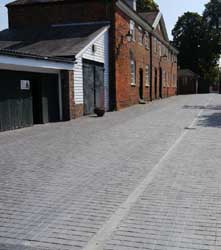
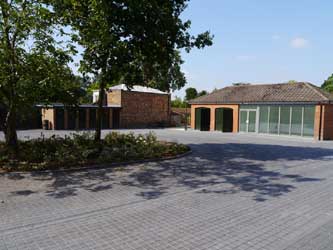
The former stable yard at Grade II listed Langtons House and Gardens has been part of a £2.3 million restoration and redevelopment project jointly funded by the Heritage Lottery Fund, Havering Council and Veolia Havering Riverside Trust. The area outside the Registry office has been paved in 2 panel staffs blue pavers with diamond chequer pavers marking out an area outside the new cafe.
British Embassy, Moscow.
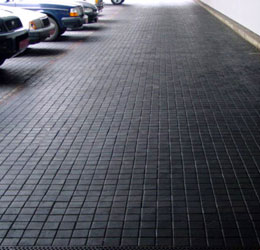
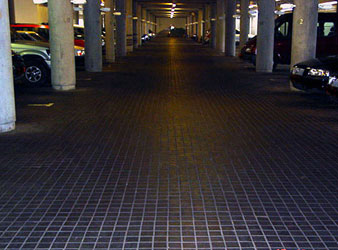
To celebrate this island of britishness in the heart of Moscow, Ketley's staffordshire blue 2 panel pavers were selected. This choice was not only based on aethectics; the physical properties of these pavers makes them ideally suited to withstand the harsh climatic conditions of the city.
Environmental
Place of Manufacture: Brierley Hill, UK
Environmental Management: 14001 Download Certificate
Quality Management : 9001 Download Certificate
Download the Ketley Quality and Environmental Policy
Life Cycle: BRE Global Certification in accordance with EN 15804:2012 Download Certificate
Energy: Fired in gas kilns to 1130o C
Raw materials: Etruria marl clay from our own quarry in Cannock, 12 miles from our factory, and sand
Lifespan: Clay pavers are long life building products and Ketley's pavers are the toughest and most durable clay pavers you can buy.
Recyclability: Ketley clay pavers can be carefully lifted and reused. They can also be crushed and used as aggregate and/or as an inert bulk fill
Packaging: We keep packaging to a minimum using wooden pallets and we do not shrink wrap our paver packs.
Find out more about Ketley's approach to sustainability
Click for the Brick Development Association infographic on Sustainability of Brick
See below the latest video about Sustainability of Brick from the Brick Development Association
Tech Spec
Staffordshire Patterned Pavers Specification Sheet
Performance Standard: BS EN 1344:2002
Ketley Patterned Pavers are produced at our works located in the heart of the Black Country. They have been made from our own Etruria Marl since Victorian times. Their unrivalled physical properties include their strength, durability and permanence of colour.
|
Work Size mm |
Pattern |
Pack Weight |
No per pallet |
Units/m2 Rigid with 10mm joint |
Units/m2 Flexible butt Jointed (3mm joint) |
|
220 x 105 x 50 |
Diam Cheq / 2 panel / 8 panel / star |
1300kg |
500 |
38 |
42 |
|
200 x 100 x 50 |
Diam Cheq / 2 panel / 8 panel / star |
1150kg |
500 |
43 |
48 |
|
220 x 105 x 65 |
Diam Cheq / 2 panel / 8 panel / star |
1360kg |
400 |
38 |
42 |
|
200 x 100 x 65 |
Diam Cheq / 2 panel / 8 panel / star |
1200kg |
400 |
43 |
48 |
|
|
|
||||
|
Colour |
Staffordshire Blue, Staffordshire Brown Brindle, Staffordshire Red |
||||
|
Raw Material |
Etruria Marl Clay |
||||
|
Manufacture |
Extruded, Wirecut and fired above 1130 degrees C |
||||
|
Bulk Density |
2,300kg/m3 |
||||
|
Texture |
Dragfaced |
||||
|
Size, Tolerance |
BS EN 1344: 2002 |
||||
|
Size Range |
R1 |
||||
|
Mean Transverse Breaking Load |
T4 |
||||
|
Unpolished Slip/Skid Resistance |
U3 |
||||
|
Abrasion Resistance |
|
||||
|
Freeze/Thaw Resistance |
FP100 |
||||
Fittings
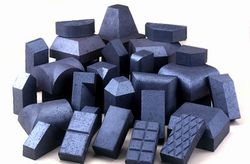 Ketley Brick have a long history producing special bricks and pavers.
Ketley Brick have a long history producing special bricks and pavers.
View our Paver Specials Gallery
Browse our paver specials range online
Our unique plant produces a traditional natural clay colours for both the Paver and Brick ranges. Because our squares, pavers and specials are fired together, our colours are consistent through the range.
Ketley Brick also offers a made to measure service for bespoke requirements, this is covered in the Special Shapes section.
Laying
Paver Laying
Clay pavers should be laid in accordance with BS 7533-3:2005+A1:2009.
For post laying care, download our guide here
Download industry guidance on paver cleaning here
It is useful to plan the layout of pavers before full scale laying begins. It may help to minimize the number of pavers that need to be cut. It will help to identify the likely sand surcharge needed in setting levels. It will also indicate the likely finished appearance and the standard of on-site workmanship.
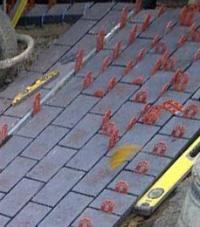 Clay pavers should be laid by hand, commencing from a straight starting edge on the prepared bedding course. They should be laid slightly open to provide a finished joint width between pavers of approx 2-5mm beyond the edge protection nibs to permit infill and to minimise damage in compaction and subsequent use. Failure to do this may result in chipping of the clay pavers.
Clay pavers should be laid by hand, commencing from a straight starting edge on the prepared bedding course. They should be laid slightly open to provide a finished joint width between pavers of approx 2-5mm beyond the edge protection nibs to permit infill and to minimise damage in compaction and subsequent use. Failure to do this may result in chipping of the clay pavers.
Ketley pavers can be supplied with or without nibs. (Please note the nibs are there for edge protection of the pavers and are not spacer nibs, therefore the nibs should not be used to determine the gaps between pavers). If deviation from the bond pattern does occur, the pavers can be adjusted to open the Joints to about 5mm. This process is known as gapping. A small percentage outside this figure will not affect paver performance.
When a 90° herringbone bond pattern is used, a string line should be set up at right angles to the starting edge, and a "nose" of paving can then be advanced along it. When laying 45° herringbone pattern the laying face should develop parallel to the starting edge.
-
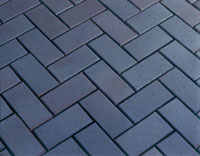 Pavers should be selected from three or more packs to ensure a thorough mix. If stocks of new pavers have to be laid on new work, they should be stacked about one metre back from the leading laid edge.
Pavers should be selected from three or more packs to ensure a thorough mix. If stocks of new pavers have to be laid on new work, they should be stacked about one metre back from the leading laid edge. -
As far as possible whole pavers should be used. Pieces of less than 1/3rd of a full paver should be avoided. Various items in the Ketley range of paver fittings overcome this problem. Infilling of boundaries and obstructions should be completed before vibration commences. Paver cutting should be carried out by a disc cutter, not by the use of a splitting machine or hammer and chisel.
It is important to check the pattern of pavers against string lines as work progresses and adjust as necessary.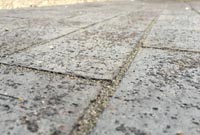
Once a sufficient area of clay pavers has been placed, approximately 40m2 on larger sites, fine dry sand should be brushed into the joints.
After brushing into the joints, surplus sand should be brushed away before compaction begins. Pavers should then be compacted into position by two or three passes of a vibrating plate compactor fitted with a neoprene pad. As recommended in BS7533-3:2005, the plate area should be at least 0.20m2. it should transmit an effective force of 50-75 :kn/m2 at a vibration frequency of between 60-1OOHz. Compaction should not be performed closer than one metre from any unrestrained edge.
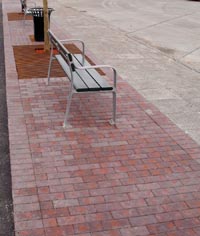 Further sand should then be applied and the procedure repeated. After final compaction 1-2mm of sand can be spread over the paved area to promote joint fitting and to fill any voids which may develop.
Further sand should then be applied and the procedure repeated. After final compaction 1-2mm of sand can be spread over the paved area to promote joint fitting and to fill any voids which may develop.
Commencement of use of the pavement may need to be delayed if the bedding course is saturated following heavy rain. During the early life of the pavement there is likely to be some settlement of sand within the joints. Therefore the site should be monitored and arrangements made for further sand to be brushed in, to top up the joints.
Instructions on how to lay for rigid construction can be found in our Clay Pavers and Fittings brochure (available here for download)
Cleaning
Paver Cleaning
Paved areas should be swept with a stiff brush on a regular basis, to remove dust and detritus that tends to accumulate, especially in sheltered corners, and around drains.
The paving should be inspected on a quarterly basis, looking for loose, damaged or stained paving, and checking that the joints are filled. Vacuum road sweepers should not be used during the early life of the pavement as they will remove the jointing sand. Other causes for loss of jointing sand include, erosion by exceptional surface water flow, the effects of high-powered engines or power-washers, action of ants or insects and loss due to movement of the paving.
In situations where an excessive amount of grime and dirt has built up, occasional steam cleaning should be carried out. Jointing sand levels should be checked after this operation and replaced as required.
Pavements in damp areas such as beneath trees and in permanent shade may develop unwanted weed or moss growth. Regular brushing will disrupt emerging weeds, a proprietary weed killer should be used which will have no detrimental effect on the pavers for more stubborn weeds. It is always wise to test the product to be used in a small area first.

